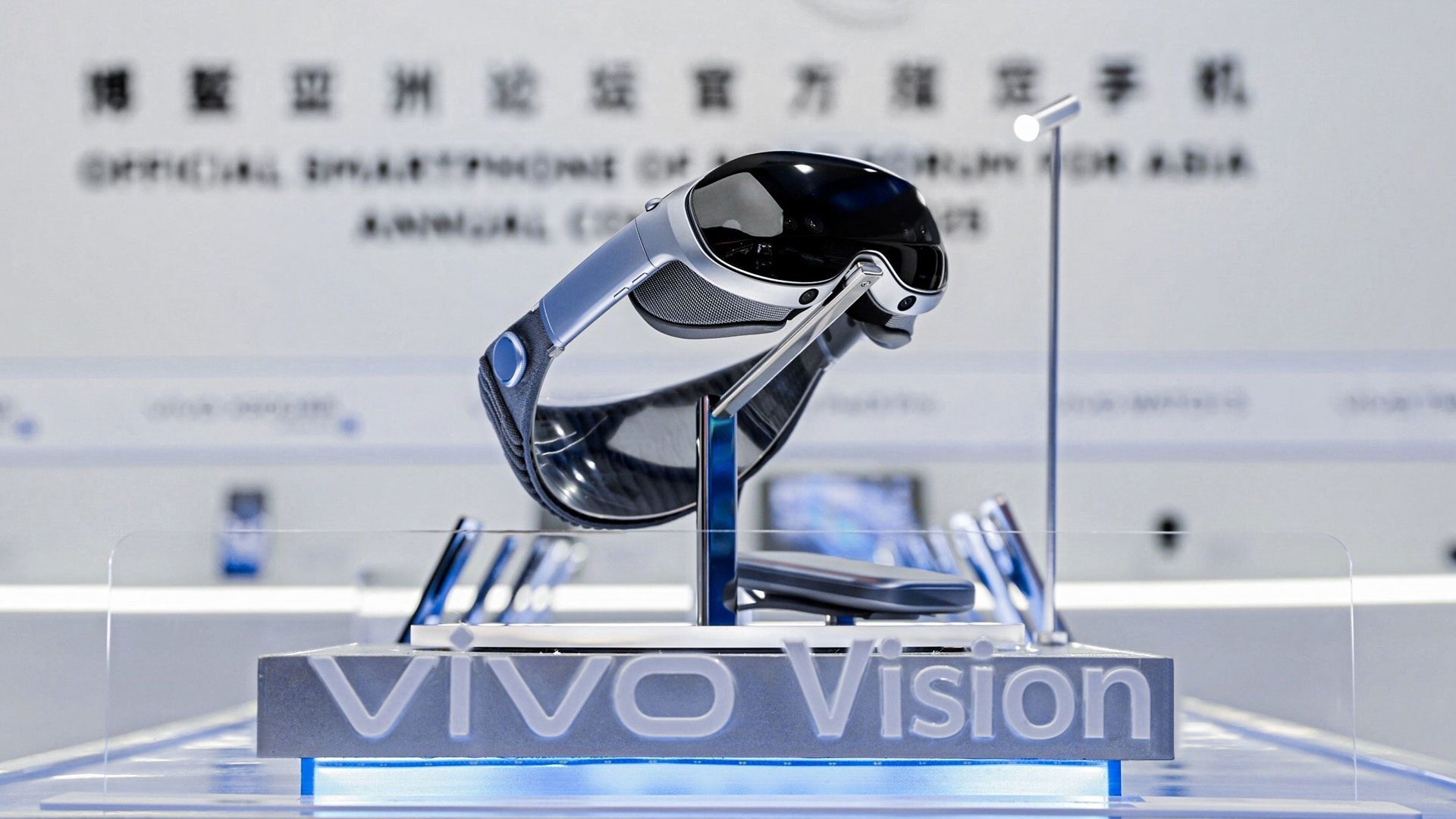- Vision Quest
- Posts
- This Week in Tech 65
This Week in Tech 65
Google's Waymo heads to D.C., Tesla's autopilot stagnates while Vibe Coding is one easy-ish way to build a video game
Welcome to the cutting edge ⚔️
Read time: 8 min
Today’s Slate
So Vibe Coding is a thing - and you can build video games with AI
Gemini is rolling out more AI video features
AI music generation might not be a bad thing, it could help musicians
Google’s Waymo is launching their service in Washington, D.C.
Numbers aren’t matching Tesla’s autopilot predictions
Orders come piling in for Ready Player One style VR headset from Bigscreen
A startup wants to build a spaceship that eats other space junk for fuel
The. Future. Is. Here.
Artificial Intelligence
At a glance
1v1 multiplayer FPS built in five hours: Developed using 3js, AI-generated assets, and WebSockets, with a total budget of just $25.
Core features: Includes an urban-style map, AI opponents, a health system, and realistic physics for an immersive experience.
AI-powered efficiency: Used OpenAI for debugging, Google AI Studio for textures, and 11 Labs for sound effects, accelerating development.
Custom vector database: Enabled real-time querying of 3js documentation, reducing debugging time and improving productivity.
WebSocket multiplayer: Hosted on glitch.com for seamless real-time matchmaking and 1v1 battles.
Iterative development approach: Focused on continuous testing and refinement, ensuring smooth progress and minimal errors.
Our vision
This project showcases how AI and modern frameworks can drastically reduce game development time and cost. By leveraging automation, real-time debugging, and iterative workflows, developers—regardless of experience—can build high-quality multiplayer experiences quickly and affordably. As AI integration in game development grows, expect more accessible, low-cost tools to empower indie developers and revolutionize rapid game creation.
At a glance
Gemini gains real-time vision: Google is rolling out screen-reading and live video interpretation features to select Google One AI Premium subscribers.
Project Astra integration: The features, first demoed last year, let Gemini “see” a user’s screen or camera feed and provide real-time answers.
User reports: A Reddit user spotted the screen-reading feature on a Xiaomi phone, confirming the rollout is underway.
Competitive advantage: Google leads in AI assistants as Amazon’s Alexa Plus is in limited early access and Apple has delayed its upgraded Siri.
Samsung partnership: Despite still offering Bixby, Samsung has made Gemini its default AI assistant on its smartphones.
Our vision
Google’s Gemini is evolving into a true multimodal AI assistant, capable of interpreting visual data in real time. This positions it ahead of competitors like Alexa and Siri, whose next-gen AI updates are still in development. With live video and screen awareness, Gemini could soon power next-level productivity, accessibility, and smart home integrations. If Google refines these features, it may redefine how users interact with their devices, blurring the lines between AI assistants and augmented reality.
At a glance
AI music skepticism turns to appreciation: A composer and educator initially resisted AI but found it could enhance creativity without replacing human input.
AI’s role in music creation: Tools like Koup Music and Riffusion generate short musical elements, not full tracks, allowing artists to retain control over composition.
Industry concerns: Musicians worry AI undercuts human creators, while companies claim it lowers barriers to making music.
Hands-on experience: The author found AI-generated samples inspired new ideas and made the process feel like collaborating with an unpredictable partner.
Key takeaway: AI is most effective when it augments rather than replaces the creative process, letting musicians shape the final product.
Our vision
AI’s role in music is shifting from threat to creative tool, enabling artists to experiment in ways they might not have otherwise. Rather than automating composition, the most effective AI models support human decision-making, offering inspiration rather than dictation. As the industry grapples with AI’s ethical implications, the real opportunity lies in hybrid approaches where artists use AI to spark new ideas while preserving their own unique voices.
TechCrunch AI glossary launch: Provides definitions for key AI terms, updated regularly as the field evolves.
AI agent: An autonomous system that performs multi-step tasks beyond basic chatbots, like booking services or writing code.
Chain of thought: A reasoning method that improves AI problem-solving by breaking complex tasks into smaller steps.
Deep learning: A machine learning subset using artificial neural networks to identify patterns and improve through repetition.
Fine-tuning: Optimizing AI models for specific tasks by further training on domain-specific data.
Large language model (LLM): AI models like GPT, Gemini, and Claude, trained on massive text datasets to predict language patterns.
Neural network: The multi-layered algorithmic foundation of deep learning, inspired by human brain structures.
Weights: Numerical parameters in AI training that determine the importance of different input features for generating outputs.
Our vision
As AI technology advances, clear and accessible explanations of technical concepts are essential for both experts and the general public. The TechCrunch AI glossary helps bridge this gap, demystifying AI terminology and making cutting-edge developments more understandable and actionable. With AI evolving rapidly, maintaining a well-curated glossary ensures that businesses, developers, and consumers stay informed in a landscape where AI literacy is becoming increasingly valuable.
Spatial Computing
At a glance
Bigscreen Beyond 2 sales surge: Sold as many units in 24 hours as Beyond 1 did in six months, with 10x the launch day sales of its predecessor.
Zero ad spend strategy: Sales were driven purely by organic interest and early reviewer feedback, without paid influencers or ad campaigns.
Early reviews and exposure: Around 10 early units were sent to creators like Tested, Thrillseeker, MRTV, and VR Flight Sim Guy.
Improved hardware: Includes a 116-degree diagonal FOV (up from 102 degrees) and a new pancake lens design for better clarity.
Two pricing tiers: Beyond 2 starts at $1,019, while Beyond 2e (with eye-tracking) costs $1,219.
Shipping updates: Initial batches were set for April (Beyond 2) and May (Beyond 2e), but new orders are now pushed to June due to demand.
Our vision
Bigscreen’s explosive Beyond 2 launch signals growing demand for ultra-lightweight, high-resolution PC VR headsets. With a stronger FOV, improved clarity, and an IPD adjustment mechanism, it directly addresses user feedback from Beyond 1. The fact that sales skyrocketed without advertising suggests word-of-mouth and influencer credibility are driving VR hardware adoption more than traditional marketing. If this momentum continues, Bigscreen could solidify itself as a major force in the enthusiast VR market, proving that compact, high-end VR is more desirable than ever.
At a glance
Vivo enters MR market: The Chinese smartphone maker announced Vivo Vision, its first mixed reality headset, at the Boao Forum for Asia.
Apple-inspired design: Features include a headstrap, digital crown button, and magnetically-tethered battery similar to the Apple Vision Pro.
Few details confirmed: Specs, operating system, pricing, and release date remain unknown, with an official unveiling expected mid-2025.
Potential Android XR integration: Vivo may adopt Google’s upcoming Android XR OS, similar to Samsung’s Project Moohan.
Growing trend of Vision Pro clones: Vivo joins other Chinese brands in producing Vision Pro-inspired headsets, following Play for Dream’s well-received CES 2025 headset.
Our vision
Vivo’s entry into mixed reality signals broader adoption of Apple’s hardware blueprint, as Chinese manufacturers race to deliver lower-cost alternatives. While specs remain unclear, Vivo’s integration with Android XR could help diversify the MR ecosystem beyond Apple and Meta. The rapid rise of Vision Pro look-alikes suggests a new wave of MR competition, but whether these devices can match Apple’s ecosystem and software experience remains the real test.
Transportation
At a glance
Waymo expands to D.C.: The Alphabet-owned robotaxi company will launch its Waymo One service in Washington, D.C., in 2026.
Regulatory hurdles: D.C.’s current laws require a human driver behind the wheel for autonomous vehicles, so Waymo must work with policymakers to enable full autonomy.
Competitive race: Waymo aims to solidify its market lead as Tesla and Zoox push their own robotaxi services, with Tesla launching in Austin this summer.
National expansion: Beyond D.C., Waymo will launch in Miami in 2026 and is mapping 10 new cities, including Las Vegas, San Diego, and Nashville.
Testing in D.C.: Waymo has already deployed a test fleet of Jaguar I-Pace robotaxis in the capital, operating with safety drivers as it prepares for a commercial rollout.
Our vision
Waymo’s aggressive expansion signals its intent to dominate the robotaxi space before competitors like Tesla and Zoox gain momentum. However, launching in D.C. presents a political challenge—Waymo must navigate complex regulations to achieve full autonomy. The company’s strategy of city-by-city lobbying and partnerships (like its Uber deal in Austin and Atlanta) could be the key to unlocking widespread adoption. If Waymo successfully influences D.C.’s permitting rules, it may set a precedent for autonomous vehicle policies nationwide. The battle for robotaxi supremacy is heating up, and Waymo is making its move to secure the future of driverless urban mobility.
At a glance
Tesla’s FSD is stagnating: Despite Musk’s claims of “exponential improvement,” miles between disengagements have barely doubled, far short of his promised 5-6x increase.
FSD v13 performance: Data shows 495 miles per disengagement, well below the 700,000-mile safety benchmark Tesla needs for unsupervised driving.
Shifting focus: Tesla is prioritizing a geo-fenced robotaxi service in Austin over improving FSD for private vehicles.
Musk moving the goalpost: Instead of full autonomy for all Teslas, Musk is pivoting to a Waymo-style ride-hailing model—a strategy he previously dismissed.
FSD reality check: Still a Level 2 driver assist system, FSD requires supervision and remains far from self-driving despite years of promises.
Our vision
Tesla’s pivot from consumer autonomy to geo-fenced ride-hailing suggests a recalibration—either strategic or forced. If Tesla launches in Austin this summer, Musk can claim an autonomy win, even if it falls short of FSD’s original promise. This shift may frustrate Tesla owners who expected their cars to become personal robotaxis, not part of Tesla’s own fleet. The question remains: can Tesla scale beyond geo-fencing, or is this its final version of "self-driving"?
Space
At a glance
Warlock propulsion system: Uses solid metal as fuel, providing higher thrust than traditional electric propulsion while maintaining efficiency.
Potential for satellite recycling: Could consume dead satellites for fuel, reducing the need for propellant launches and addressing space junk.
Prototype launch in June: Initial test will focus on ionizing solid metal before attempting satellite recycling.
Technical challenges: Retrieving tumbling satellites, surface contamination, and metal structure degradation could impact long-term viability.
Standardized compatibility: Designed for integration with various satellites, supporting Earth observation, servicing, and communications.
Our vision
Magdrive’s Warlock system presents an intriguing solution to both propulsion and space debris, but its feasibility remains uncertain. While the ability to harvest dead satellites for fuel could revolutionize space sustainability, challenges like satellite retrieval and material degradation must be overcome. If successful, Warlock could reduce launch costs, extend satellite lifespans, and make spaceflight more efficient, pushing the industry toward a self-sustaining orbital ecosystem.
Try Artisan’s All-in-one Outbound Sales Platform & AI BDR
Ava automates your entire outbound demand generation so you can get leads delivered to your inbox on autopilot. She operates within the Artisan platform, which consolidates every tool you need for outbound:
300M+ High-Quality B2B Prospects, including E-Commerce and Local Business Leads
Automated Lead Enrichment With 10+ Data Sources
Full Email Deliverability Management
Multi-Channel Outreach Across Email & LinkedIn
Human-Level Personalization
How did you like this week's edition? |










